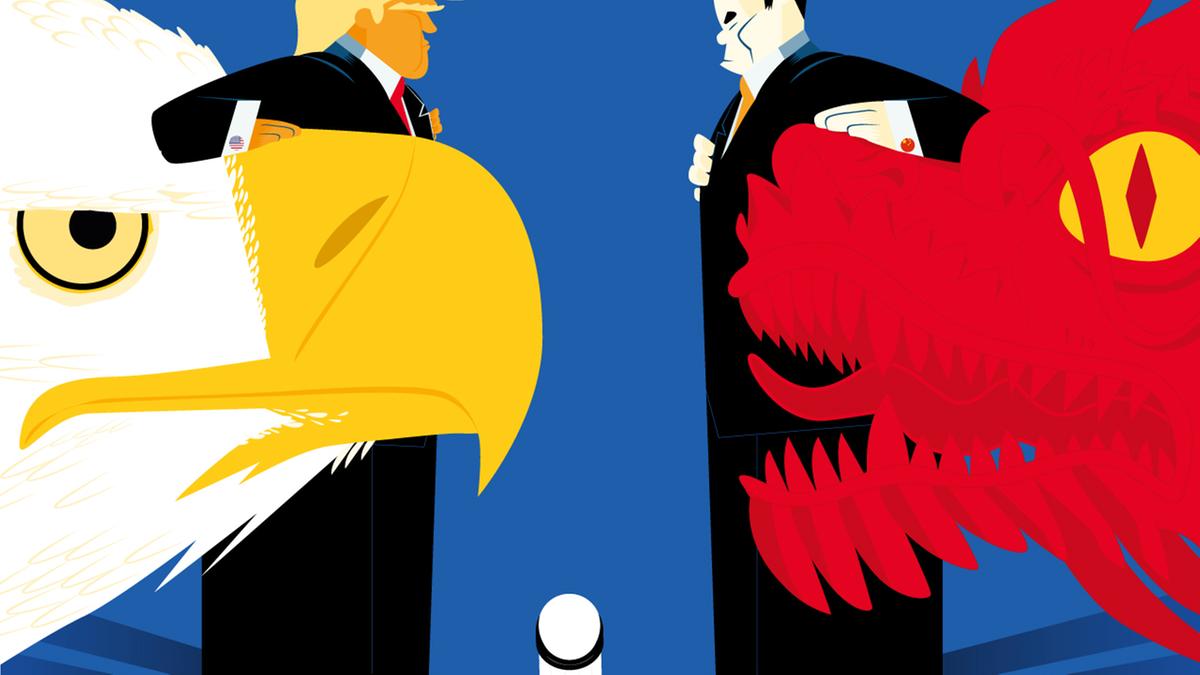US-China trade tensions: Trumps to hit with new tariffs

US President Donald Trump said on Tuesday that he would proceed with tariffs on $50 billion in Chinese imports and introduce new limits on Chinese investment in US high-tech industries as part of a broad campaign to crack down on Chinese acquisition of US technology.
The moves, less than 10 days after Treasury Secretary Steven Mnuchin said the trade war with China was “on hold,” appear designed to create bargaining leverage for Commerce Secretary Wilbur Ross, who is due to arrive in Beijing on Saturday for talks aimed at cooling trade tensions.
Adding to the confusion are divisions among Trump’s trade advisers and complaints from members of Congress, who fear that the president may be stumbling into a costly multi-front trade war.
Along with confronting China, the Trump administration is embroiled in talks over a new North American trade deal and is threatening to impose new tariffs on imported automobiles. The president’s enthusiasm for import taxes on a variety of products has drawn opposition from powerful members of his party, including the chairmen of the Senate Finance and Agriculture committees.
Initial Chinese reaction to the White House statement was restrained. “We are very surprised by the White House statement. No matter what measures the US will take, China is confident and capable of defending our national interests,” the Chinese Ministry of Commerce said.
The president has been pressing China to reduce the $375b US goods trade deficit and to drop trade practices that he says hurt American companies.
But two days of talks in Washington ended earlier this month with only vague Chinese promises to buy more US agricultural and energy products.
“The Trump administration is back in attack mode against China after what had appeared to be a temporary truce in the trade tensions,” said Eswar Prasad, former head of the International Monetary Fund’s China division.
The White House statement said the president had been “updated” on several steps after the March release by US Trade Representative Robert Lighthizer of a study detailing a sweeping Chinese effort to vacuum up American technology through legal and illegal means. But none of the actions described in the one-page statement are certain to take effect.
“The United States will implement specific investment restrictions and enhanced export controls for Chinese people and entities related to the acquisition of industrially significant technology,” the White House said.
Specifics of the new investment limits will be announced by June 30 and will take effect “shortly thereafter,” the White House said.
The White House announcement may be only the latest dizzying turn in Trump’s carrot-and-stick approach to trade negotiations. After threatening tariffs on up to $150b in Chinese products in April, the president settled this month for what Mnuchin described as a “framework” for progress, following two days of bargaining with Chinese officials in Washington.
Now, tariffs on the first US$50b are back on track – though the president could change course again. “The tariffs and the other stuff are totally discretionary and can be waived,” said Jeff Moon, a former US trade negotiator.
The announced investment restrictions come amid bipartisan criticism of Trump’s softening of penalties for ZTE, a Chinese telecom company that had traded with Iran and North Korea in defiance of US sanctions. In April, the Commerce Department banned the company from buying parts from US suppliers for seven years, a punishment regarded as a virtual death sentence for ZTE.
Trump has raised concerns about China’s attempts to siphon US technology secrets since his presidential campaign. Tariffs of 25 per cent will be applied to Chinese imports containing advanced technologies, including those related to Beijing’s “Made in China 2025” development programme, the White House said. The final tariff list will be made public by June 15, with the new import taxes taking effect shortly thereafter.
But business groups criticised Trump’s move. Many US industries support confronting China over a number of trade practices, including what they see as unfair licensing terms and compulsory technology transfer in return for access to the Chinese market. But they fear that the president’s focus on tariffs will hurt them as much as China by disrupting supply chains, depressing demand for their products and sparking retaliation by Beijing.
US Chamber of Commerce President Thomas Donohue called the proposed tariffs “a tax on American consumers” that would erode the competitiveness of US businesses. The National Retail Federation also came out in opposition to the president’s move.
“Tariffs do not work – point blank,” said Dean Garfield, president of the Information Technology Industry Council, which represents companies such as Apple, Google and Facebook. “Moving forward with tariffs on goods imported from China will harm US consumers and businesses, and will fail to change China’s discriminatory and damaging trade practices.”
The Chinese government, meanwhile, may interpret the president’s latest shift as a response to domestic political pressure, Moon added. “They may have been surprised by the level of concern, especially among Republicans, about ZTE,” he said.
If the resumption of Trump’s tariff threat is designed to put pressure on Beijing before Ross’ arrival on Saturday, it could backfire.

